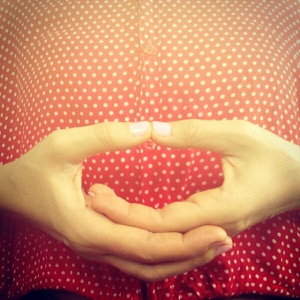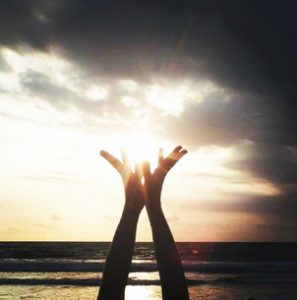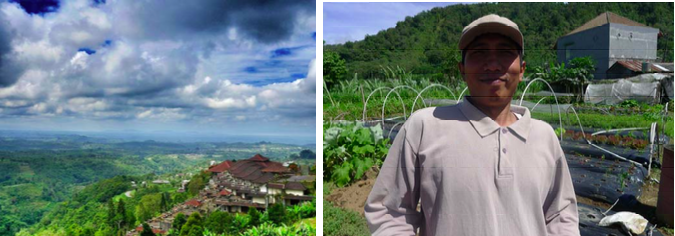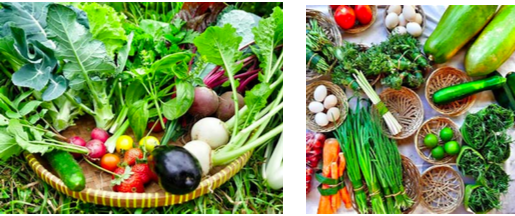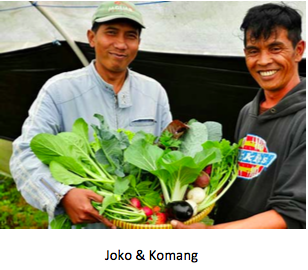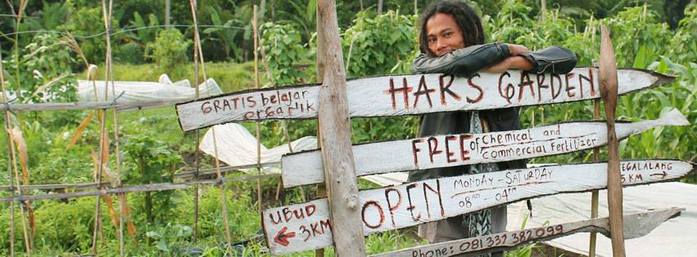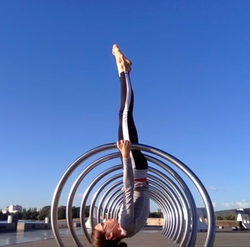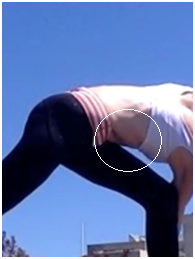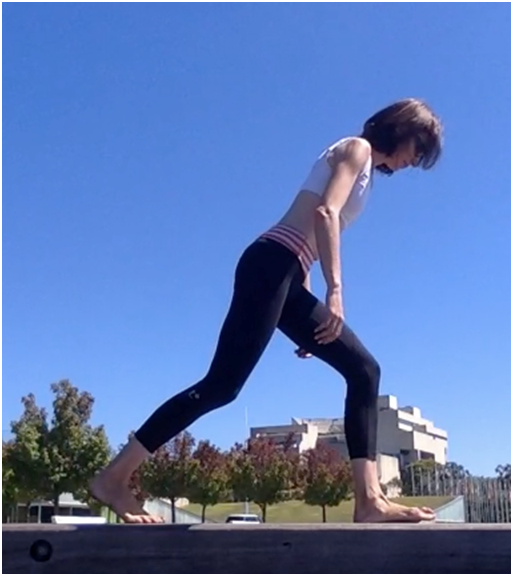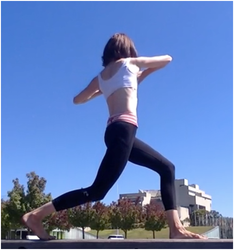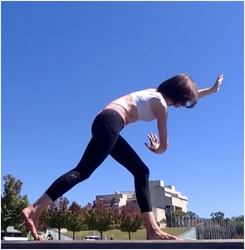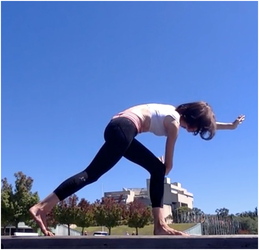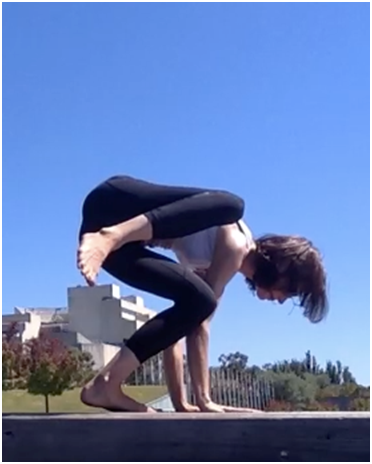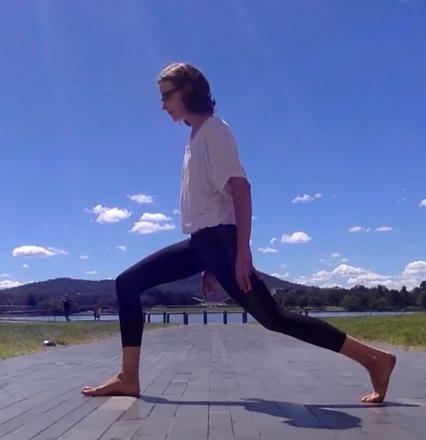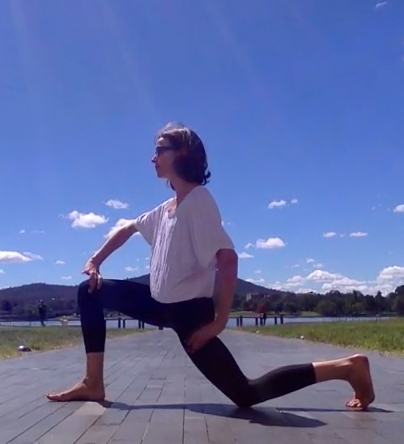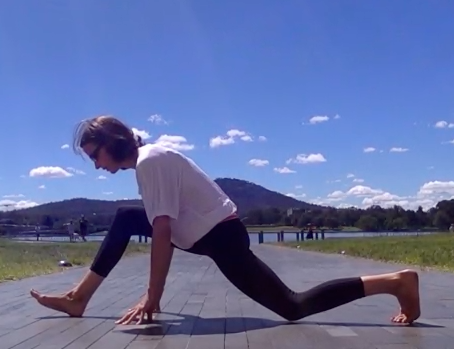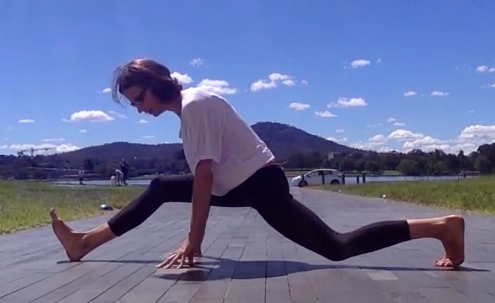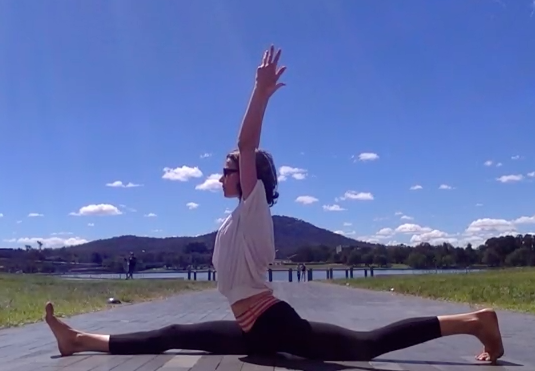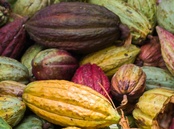Ashley Dawn
Just as a waterfall trickles down a mountain side, caressing, and splattering down the solidified rock, incessantly, every day, and every night, thus evolving and shaping the mountain, ever so slightly, subtly, so do the foods we eat, they shape and sculpt our bodies, slowly, over the period of our lives.
Eating raw plant food is truly a beautifying experience! I love walking through a blooming lush garden painted with vibrant colours, an array of textures, fresh fragrances, and rich aromas. I am delighted to know that I lavish my body with noble gifts from nature. Allowing these gifts to nourish me from the inside out.
By understanding the idea that what we consume on a daily basis, will create our future. It makes sense that eating beautiful foods will support us, so we flourish, and come alive. Beautifying foods are living foods in its raw and natural form. Living the way that nature has intended is the last frontier we must cross. Nature alone cures, all anyone can do is assist, and not interfere with its efforts. Our bodies are able to heal itself, when given the raw materials to do so.
Eating different foods will lead us to certain directions in our lives. They fuel our emotions, they create our appearance, and affect the way we act. By consuming vital, rich, living foods that are energizing, we are going to begin feeling more bountiful, and more vibrate then ever before.
To find out what works for you, you must try and create experiences for yourself. Always trust your own common sense, regardless what others may tell you. What makes the most sense to you? If it resonates with your beliefs, and it is making you feel good, go for it, and try it out!
I choose to align my diet with what is provided by nature. When we choose not to interfere with nature, it maintains a perfect rhythm, balanced harmoniously, and its symmetry is aesthetically pleasing to the eye. To me it just makes sense!
“Beauty of whatever kind, in its supreme development excites the sensitive soul to tears.”
-Edgar Allan Poe
About the blogger:
Ashley Dawn is a health and sensuality coach, and an artist. She is passionate in love, beauty, and power – the Goddess power. You may also read her blogs from her own website.
ThirstySoul
www.thirstysoul.ca
Dhyana Mudra
I can’t say I have a favourite mudra but this one comes close. I feel a great sense of calm and relaxation whilst using it when in meditation. No wonder it’s called the ‘gesture of mediation’.
It’s super simple to do. The right hand is placed on the left hand with each finger gently resting on the opposing finger with thumbs touching. The hands form a triangle-like shape which circulates energy.
It’s most commonly used in Buddhist and Zen style mediations and is known as the psychic gesture of meditation.The mudra either rests in the lap or can be positioned at the level of the navel center.
If the thumbs disconnect during meditation it’s a fantastic indicator that you’ve drifted off and gives you the opportunity to bring your focus back to the present moment.
When I was in India on my days off from the Yoga Synergy training I would often go to the bookstore where I would peruse their vast collection of yoga books. I bought a little book titled Yoga Mudras by Shivayogi G. Madanbhavi . The descriptions are quite basic and sometimes most amusing:
Dhyana Mudra ‘The performer achieves greater brilliance and becomes an attractive personality. He becomes capable of influencing people widely. His worries seem to disappear as he attains mental peace. This mudra greatly helps in improving concentration.’
They recommend performing this mudra for a minimum of 20 minutes daily to achieve the above results.
Happy and safe practicing!
THE TEAM : The process of working collaboratively with a group of people in order to achieve a goal.
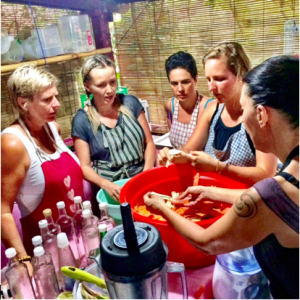 I have to admit that when I started writing this blog I wasn’t sure how to approach it.
I have to admit that when I started writing this blog I wasn’t sure how to approach it.
Here’s a clear description on this subject which I randomly googled:
Teamwork is often a crucial part of a business, as it is often necessary for colleagues to work well together, always trying to do their best in any circumstance.
Teamwork means that people will try to cooperate, using their individual skills and providing constructive feedback, despite any personal conflict between individuals.
And I totally agree with it.
Below I rewrote how I see a team. I guess anyone can have their views but the results remain the same.
I see the team as a machine and the participants as the fuel of the machine. Without fuel the machine just cannot run. Every member of the team and what they contribute is crucial.
Isn’t it incredible how one person can have an idea and turn it into something that not only benefits themselves but everyone around, and then to be able to share the idea with others? A seed is planted now let’s nurture it so it can grow into something amazing.
A well run team is always creating, inspiring and motivating each other to be part of the big picture .
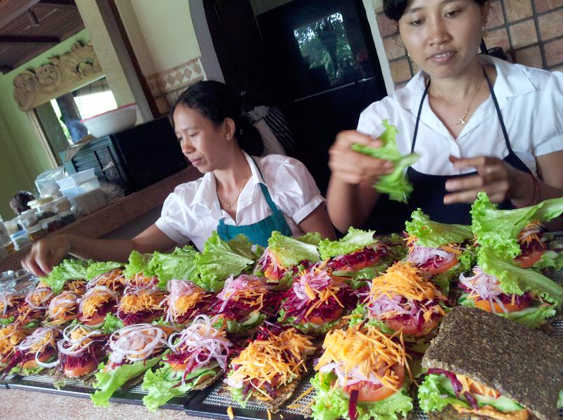 The preparing, advertising, sourcing, ordering & communicating are just the beginning .
The preparing, advertising, sourcing, ordering & communicating are just the beginning .
The list goes on and on.
As a team we divide and share the work load.
Also very crucial is communication with each other and carrying each other during a retreat.
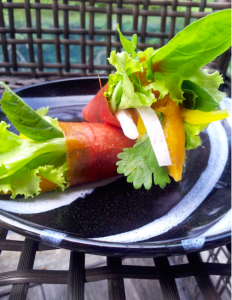 I like to always do something new for each retreat. For the last retreat I chose a theme fruit according to availability and what was current in season. It was dragon fruit with its amazing fuchsia-magenta colour.
I like to always do something new for each retreat. For the last retreat I chose a theme fruit according to availability and what was current in season. It was dragon fruit with its amazing fuchsia-magenta colour.
I used it in everything from fruit salads, wraps, cakes and desserts, drinks you name it – I just love creating menu’s around a fruit and its colour. It also brings so much more creativity into each recipe and dish.
So after many weeks of pondering, drum roll please; for our September retreat I have decided that Mangoes and their beautiful golden yellow colour will be the feature fruit!
Who doesn’t love its taste and texture? It’s one of the most cherished and loved fruits in the tropics. And I already can think of so many new ways on how to use it in the dishes I’ll be serving. Just wait and see. We are all in for a real treat.
There are so many benefits fermented water from the kefir grain can give you. It’s a no brainer to include them in your life if you’re looking for ways to keep healthy and vibrant.
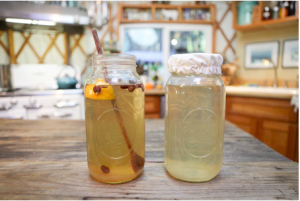
Drinking Water Kefir can help you to achieve your optimal health, strengthen your immune system, and help to prevent diseases of all kinds. Most importantly, it restores good digestion – the key to health and longevity. When your body is out of balance, unfriendly opportunistic bacteria and yeasts can take over – producing irritable and bad digestion, food allergies, headaches, flu, skin rashes, and other more serious disorders. Water kefir is something you and your family can drink and use on your skin every day.
It inhibits the growth of unfriendly bacteria and yeasts, and helps beneficial probiotic microorganisms to colonise and thrive in your digestive tract, and throughout the rest of the body (skin, eyes, bladder, vagina, nose, throat, etc).
It contributes to a healthy immune system.
It reduces inflammation.
It helps with the digestion of food and micronutrients. The key for health and longevity is good digestion, and a balance of good bacteria is the essential starting point.
It can heal and reduce the symptoms of irritable bowel syndrome IBS including bloating, indigestion, flatulence, diarrhoea/constipation, nausea, low energy, muscle aches and pains. It heals intestinal dysbiosis and SIBO (small intestine bacterial overgrowth).
Your increased energy and overall feeling of good health rises.
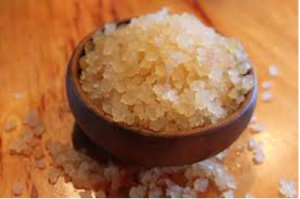 As a consequence it can stop unhealthy food cravings, especially for sugars and sweet foods.
As a consequence it can stop unhealthy food cravings, especially for sugars and sweet foods.
Skin complexion and overall condition improve. Brown liver spots / age spots can fade, as can skin tags, moles, warts etc. It can ease or cure many skin conditions, such as psoriasis, eczema and acne.
Hair and nails look healthier, and are strengthened and improved.
Liver cleansing, as in traditional Chinese medicine, eases aches and joint pains, and benefits the eyes.
Glandular ( endocrine) system (adrenals, thyroid, pituitary, ovaries) benefits. Women have healthier periods, some women have periods start again after early menopause.
It has a tranquillising effect on the nervous system so helps many who suffer from sleep disorders and insomnia, depression, ADHD and autism.
What more could you ask for in these little bundles of bacteria. They are so easy to cultivate and keep at home. They thrive on a sugar solution in water. Making a fresh batch of KefirWater every few days and keeping a supply in the fridge to drink doesn’t get any easier than that!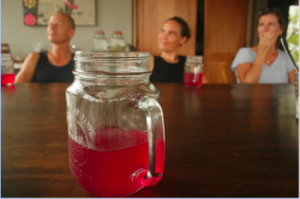
At our retreats we always place emphasis on adding fermented foods and drinks into our diet. We’ll get to explore different types of fermentation processes as well as taste them as they come around the table.
Come join us on our retreat check our website for all the details www.artofliferetreats.com
The science of Mudras is a big part of yoga and is based on the fundamental principles of life and the five elements of Fire, Air, Ether, Earth and Water corresponding with each finger of the hand.
They are mainly performed as gestures by fingers, hand positions combined with yoga postures or are performed on their own. They are also often done during meditation.
Mudras also known as energy controls hold electromagnetic power which is said once held maintains equilibrium in the body elements.
There are even prescriptions of holding particular mudras for set periods of time for rejuvenating the body, healing diseases and to also help with focus. A mudra for any ailment!
The Yoga Synergy sequences incorporate them within their system and is a great opportunity to experience their effects whilst practicing yoga.
For the purpose of these next few posts we will keep the focus on particular hand mudras and later expand into generating mudras within postures.

PANKAJ MUDRA or also known as the Lotus Mudra
Is a symbol of purity and offering, and a part of worship.
In this mudra both the thumbs and little fingers touch each other.
This mudra is said to develop the fire and water elements as well as balancing them out.
‘Like a lotus, which remains detached from the mud in which it blooms, a practitioner remains detached from the mud of attachment, while continuing their meditation.’
This mudra has a cooling effect on the body, the nervous system improves and the mind becomes calms. It’s said to be a great pacifier for fevers and to work well with blood disorders.
For me I feel like my whole mood lightens up when I make this gesture it makes me want to smile. Try it out for yourself and leave a comment below!
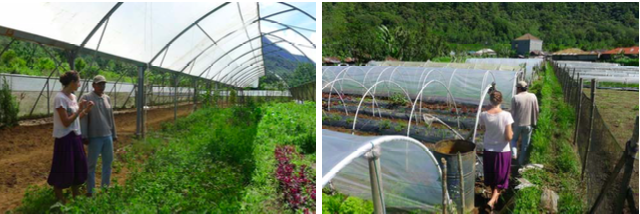
When I first began to get serious about my health and what I ate I started to look for the most accessible way to get the freshest produce. Living in the city the local health food shops didn’t quite stock the freshest choices. There just wasn’t the demand for it. And it was over priced for the amounts that I needed to sustain myself.
So I found the main organic distributors. The middle man. The companies that bought bulk from the farmers and then supplied the organic shops and businesses in town. The alarm would be set for 4am and with a 40 minute drive to the fringes of the city, this would be our weekly dedicated ‘shopping trip’.
Armed with a trolley the size of a mini platform we would shop alongside the health store owners in the huge market sheds. Most things had to be bought in bulk. So whatever was in season was eaten. We were coming home with boxes of cos lettuce, a variety of greens, an abundance of vegetable and fruits, perhaps it was oranges and cherries that week, and peaches and passion fruits the following week. Life was pretty simple, we might not have been eating a huge variety however what we were eating was all organic and it tasted fantastic.
And It made me happy knowing that I was one step closer to eating from the land.
Things have changed since then. I ended up moving closer to the farmer. But the farmers also have better access to us now. Today due to the demand, Farmers’ Markets have exploded in most places. It’s so good to see! We really have many more choices today, real opportunities to vote with our dollar to make a stand for what is most important to us.
In this video I share my joy and love for organic farming and knowing where my food comes from.
Its really living from mother earth to the table. And this gives me a sense of community and interaction that I never felt before, enriching my life even more.
See you in Bali on our next 100% organic retreat! www.artofliferetreats.com
Oksana
 Practicing Calm: Four Benefits of A Silent Yoga Class
Practicing Calm: Four Benefits of A Silent Yoga Class
Every 9 weeks I teach a silent (physical) class. My retreats always finish with a silent practice. And in workshops I will usually have a ‘silent’ break somewhere in the middle.
A silent practice is where I lead by having students follow my movements. But just because I stop talking does not mean things go quiet!
In fact, the opposite can be true. You start to hear other sounds more intently. Other voices, the water trickling, the wind swishing, the sound of clothes rustling.
It is why many teachers discourage people from leaving a class while others are meditating or relaxing; you might think you are being quiet but when the teacher stops talking all other sounds can be amplified.
And even if we could be alone in a room, we still would not be in silence. You start to hear the sounds of your breath, the sounds of the inner workings of your body—stomach gurgling, pulse throbbing. And, unless you are a seasoned meditator, you will likely find your internal voice can take on a noise all of its own!
That said, a non-verbal (physical) yoga class can help you in many ways. Since I teach one every 9 weeks and will be teaching at least one at our retreats, you will get to one eventually. Below are some of the benefits you can expect.
Letting go
First, it is a practice of letting go.
Without a teacher’s verbal instructions you need to ‘be’ where you are at that present moment in time. Indeed, you cannot ‘be’ anywhere else. When no one is telling you how to do bakasana or a handstand (or even something less complex), if you cannot figure it out, you need to let that pose go.
That means you also get a snapshot of where you ‘are’ at that moment in time and what your level of readiness for particular postures is. It gives you some insight into what you might need to cultivate further.
Going inside
Second, you gain an appreciation of just how much mental energy it takes to listen.
Listening is a great skill. It helps you to be a kinder, more socially able person.
But language processing, even when people are saying helpful or kind things, takes up a lot of your brain’s capacity.
When you do not need to listen anymore you are free to follow your own internal voice and intuition. Again, you become more in tune with what is going on with you at that moment in time.
Many religious orders and spiritual retreats harness the insightful power of this type of silence.
Greater connection
But being in silence does mean being alone. A third benefit is the amazing capacity of the verbal silence to enhance a feeling of connectedness.
In a silent class you are not just doing your own thing entirely. You are still following the basic movements and timing of the class.
And the silence combined with shared movement, helps you feel more connected to others in the group. You sort of become a bit like a school of fish who move collectively—communicating via something other than spoken language.
The connection is not just to the group, however, because the silence of the group also helps you become more in tune with the environment. You attain a keener sense of the ground beneath you, breeze and sun on your skin, wildlife around you, and the people passing by.
Thinking less
A fourth benefit is that this type of practice can help you out of ‘over-thinking’.
With no verbal instructions you have less to question—what does that mean? What is she talking about? Am I doing it right?
Over-thinking is one of things that can block movement of energy through our body and, as such, block feelings of overall well being. It can make us stiff, rigid, anxious, and prevent us from seeing clearly.
When we cannot ‘see clearly’ we do not feel at our best. We tend not to make the best decisions.
Practicing calm
These four things—letting go, going inside, a sense of greater connection to the group and environment, and thinking less—all help you to practice bringing about a sense of calm.
Most people, at the end of the silent practice, find it easier to meditate and find the quality of their meditation much enhanced.
We will be sharing some beautiful silent practices with you at our retreats and in the classes we teach around the world. Looking forward to seeing you somewhere soon!
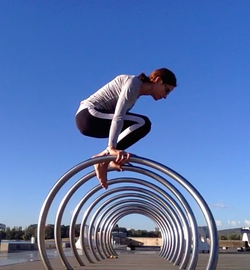 One thing I don’t want to use to help me with my handstands is the wall. That means I need to look for a few other interesting variations.
One thing I don’t want to use to help me with my handstands is the wall. That means I need to look for a few other interesting variations.
A few weeks ago I popped up a post of us practicing yoga on top of some blocks. That helped my skinny arms and tummy get strong.
Then I looked over from the blocks. These bike racks hang out near where I hang out and so I thought I would see if there was a way for us to hang out together.
I tried a few push variations with me on top and pushing down with my armpits to bring my knees to chest. Then I realised I was finding a lot of things to push on but was there a way to get some pull action going on.
It lead to the upside down variation of shoulderstand, which I have called a flying shoulderstand, and you can check it out in the video below.
This gave great pull action around the armpits and also I tried to minimise momentum and use my tummy muscles to help me move around and into and out of the posture. I am actually pretty weak so you can see a little swing here and there.
This would be better if I were higher off the ground so I could try and let my neck be a bit free.
I did not want to put my head on the ground and I don’t recommend anyone even try what I am doing without some supervision. If you are not strong enough you would fall on the back of your neck and that is obviously not good so I am not advising go out and do this at all or unthinkingly. This is mainly for my students and safe practitioners.
Hmm, I wonder if we will find some bike racks in Bali for our retreat?
Happy and safe practicing!
Much metta,
Sonja
www.yogacafecanberra.blogspot.com
www.artofliferetreats.com
 People who have a mindless moment, like a Satori, seem to be at peace – The Peace That Passeth All Understanding.
People who have a mindless moment, like a Satori, seem to be at peace – The Peace That Passeth All Understanding.
So that could bring up the question of how is it the mind is so active?
It is there to take care of us. If we are not present, which is most of the time, we may not recognise a possible danger.
Trouble is, the mind is rather crude, so misses the subtle.
It can only access the past, so to be on the safe side it tends to be either pessimistic of optimistic – thus missing any possibility of anything new.
Scientists are now telling us that we have more thinking cells in our heart, and belly, than we do in our head – so there are other possibilities.
So in order to access any new suggestions from these centres we need to learn how to listen.
So the suggestion is to spend a little time each day listening to what the other centres may be attempting to communicate to us.
It can be called the Intuition.
Some scientists are now saying that there may not be anything like what we call time, and what we call the past and future may be generated in our minds.
If that is so, maybe psychics are accessing our possible future?
And if they can do it, so can we – if we give it a chance – by being a bit more accessible.
Inspirations from Paul Lowe ~ http://www.paullowe.org/
 Fancy some chocolate anyone?
Fancy some chocolate anyone?
Chocolate does not need to be a guilty pleasure. Why feel guilty when you can be doing something good for yourself, like sharing in the delights of some home made chocolate.
Here we share with you our thoughts on chocolate. We are looking even more forward to sharing the real thing in Bali soon!
Who doesn’t love chocolate?
And when it is raw, natural guilt free chocolate, even better.
I know a lot of yogis and health conscious people out there that can eat it by the bucket load. It triggers something in everyone you just want to go back for more.
I love making my own raw-chocolates.
Again, quality over quantity for me. I can eat 2-3 but that is it. For some reason my digestion can only tolerate small amounts.
My favorite types of chocolate are truffles, or the plain with activated nuts.
I went through a stage putting adaptogens like astragulas, shilajit-ginseng-reishi into my mix and that gets into a whole new level of mind opening craziness!
Anyway, I will be giving a chocolate making workshop at the coming art of life retreat so watch out.
Oksana
The cacao bean used to be the Mayan currency. That’s how highly it was valued!
Put cacao beans under a heavy press and by extraction you get 2 ingredients: cacao butter and cacao powder. Put cacao butter and powder back together again, and the alchemical process makes chocolate!!
Raw, untreated, unheated cacao has high levels of triptophans!!
Triptophans effect our serotonin levels – that’s why we feel good when we eat chocolate.
Chocolate also contains dozens of mineral and vitamins, the highest of these being magnesium. Magnesium is excellent for us especially after any form of exercise, like after our yoga practice!
I always have chocolate in the house. I make it myself. It is really easy to have a week’s supply. I eat it all the time.
Commercialised chocolate is far from the real thing. The majority of it contains gums, emulsifiers and stabilizers, and most brands have been using palm oil too.
The level of sugar (and it’s the bad fructose sugar they use) is stupendously high, as well as flavor enhancers, these days they even replace the whole ‘chocolate factor’ with a substitute additive called PGPR made in the lab (see this link for more http://www.progressive-charlestown.com/2012/02/things-you-probably-dont-want-to-know.html)
Vote with your dollar, vote for nutrition, and eat as much good chocolate as you want!!!
I eat things as I feel like them. For some reason I tend to feel like a piece of chocolate at the end of the day.
I have always preferred dark chocolate to milk chocolate. I like trying different types of chocolate with bits of things in them.
I don’t eat much chocolate and I never feel like eating very much anyway. For me it is about having a small taste of something.
I have never been a person to sit down and eat a whole block of chocolate although I know lots of people who tell me they can do so with ease. I cannot even imagine feeling like I would want to.
Maybe I have a different chemical make up? Enough serotonin naturally? I used to be a runner and could run for hours and never have a so-called ‘runner’s high’. I just felt a basic calm and happy.
 Many people ask us before we run retreats whether there will be coffee.
Many people ask us before we run retreats whether there will be coffee.
A part of our retreat process is to help you question these types of assumptions that can lead to feelings of guilt or shame. We are about happiness after all!
It does not mean we are hedonists promoting everything that feels good. We just try to help you towards a healthier line of thinking so you can make more informed decisions for yourself, that’s all.
And managing people’s coffee expectations at our yoga and raw food retreat is not hard! We drink coffee! And, we also want to be flexible enough to try different things too.
Below are our quick thoughts on coffee. You will see that some of us have much more knowledge than others and, perhaps most importantly, that we try not to just drink coffee simply out of habit and have had a little think about what we are doing to get to the places we are now—different places as they are!
I had a big break from coffee a couple years back when I started being 100 percent raw. My body just couldn’t tolerate it so I stopped.
When on raw food I was getting naturally stimulated therefore coffee’s stimulating properties were almost too much to handle.
Now, since being on an 80 percent raw food intake, I have discovered the coffee bean again. But I always question where it comes from and how has it been processed etc.
I prefer quality to quantity.
I love it black but sometimes crave the odd nut milk latte.
Oksana
I love the smell of the coffee. And I certainly have a taste for good coffee. I like trying different brews and filtration systems, at the moment I am into Flores and Toraja coffee (different regions in Indonesia). It’s a darker bean, almost black and had a more rounded earthy chocolate taste to it.
I drink my coffee black. And I generally don’t drink it first thing in the morning.
I am very aware of what its effects are on my body.
Coffee has a bad name for it because it’s addictive, can make you jittery, acidic and ‘over stimulated’. Many people ‘use’ coffee to move their bowels in the morning.
There are 2 types of coffee bean – the Robusta and Arabica bean.
The Robusta coffee is a lower grade bean produced heavily by 3rd world countries for big corporation to produce a cheap high caffeinated bean to flood the market. Starbucks, Gloria Jeans, Nestle etc. If it is Big it is using the robusta bean.
The Arabica bean is the higher grade bean, grows usually at higher altitude, and needs more refined conditions.
The caffeine content is what most people get addicted to. Caffeine effects your nervous system and your adrenals. But the most unfavouable quality of coffee is actually its acidity levels. It takes 12 cups of water to reduce the effect of one cup of coffee in your system! That’s 12 cups of water!!!
The smell and the colour of acidic urine is strong! So watch your pee and make sure you drink lots of water to dilute the effects from your body.
I forced myself to start drinking coffee when I started work to be social! I didn’t like it at first but I soon began to. I only had one cup a day.
Then one day I was not able to have my coffee at the regular time due to some routine change.
I got this massive headache that lasted all day and I did not know what it was.
I later figured out that it was this one cup of coffee that my body became addicted to. I didn’t like the idea of being addicted to something. This was all before my days as a practicing yogi.
So I stopped for a while. However, the ritual of a hot drink at certain times was very calming so I was just having something else like a tea or herbal tea or something.
Over time I somehow felt it was time to have some coffee again and I gradually started drinking it. It actually gave me some sort of physiological lift. I think it is the caffeine and it has an effect on my blood pressure. I have naturally quite low blood pressure, which, if it gets too low can make you feel very weak and unable to do anything. I have not had this scientifically verified or anything! But, what I found was that without changing anything else—exercise, diet (vegetarian, a lot of it raw), that cup of coffee seemed to make a difference.
So now I drink coffee again. I will have to look at the type of coffee now Im more informed. You will see I am the most unrefined of the foodies here but that is where I am at. I use an aeropress.
I remember reading Iyengar’s book, Light on Yoga, and in the beginning section it talks about having a cup of tea or coffee in the morning before your practice. I thought, well, if Iyengar says then there you go!
However, I am always acutely aware that coffee is large source of income for millions of people in developing countries. I know that labour conditions are not always the best for them and I hope that can be improved.
Apparently:
65 years after their last meeting BKS Iyengar and Pattabhi Jois met again, and their topic of conversation was their mutual love for coffee!
 In general jams have been made from the need to preserve fruit so you can enjoy them and their flavours in periods in which it’s hard to source them.
In general jams have been made from the need to preserve fruit so you can enjoy them and their flavours in periods in which it’s hard to source them.
At the time of ancient Rome there were very similar products to jam, made from whole fruit dipped in sweet wine, mulled wine, juice and even honey.
The Italian Geography of fruit and their flavours are:
South Italy, thanks to high temperatures is famous for citrus marmalade.
Lemon marmalade in Sicily, oranges in Calabria and quince and figs in Puglia. In these lands citrus are vast and can enjoy a hot and tireless sun.
Central Italy offers a wide range of grape jam.
In Northern Italy, thanks to the humid climate, the forest fruits are used for jams. Blueberries, blackberries, raspberries and strawberries.
Jam can be made from: cherries, plums, oranges, strawberries, peaches, apricots. One of the greatest benefits of not boiling the fruit unlike the traditional way of making jam is that all the enzymes are intact and so much less sugar is needed. They can enjoyed with raw crackers and breads.
It’s ideal for the whole family.
An abundance of colors and flavours to be tasted at any time of the day: breakfast, snack time and can also be used for the preparation of so many other raw sweets.
I used lemon and dates as the preservative. Dates with its natural sugar enables ‘marmelada’ a 4-5 day life in the fridge.
Ingredients:
- 500g of ripe apricots, or any fruit of your choice
- 7-8 large fresh dates
- Juice-half a lemon
- 1 teaspoon of lemon peel
- ¼ teaspoon nutmeg
Put all the ingredients in food processor and process until a thick mass – the marmelada is formed. It will need 2-3 min, depends of the power of food processor.
Put the jam into a jar, eat and store the rest in the fridge.
Hugs from Italy! :))
Neli Todorov writes an active blog http://nelisraw.blogspot.it/ and shares news of workshops and events on her facebook page
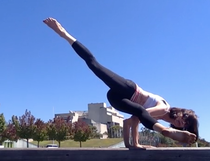 As a teacher I am always trying to demonstrate active movement and show where movement may be coming from. Sometimes this is tricky because what you see may not be where the movement arises.
As a teacher I am always trying to demonstrate active movement and show where movement may be coming from. Sometimes this is tricky because what you see may not be where the movement arises.
Also, sometimes a more passive posture may end up looking much the same as the active posture. But the feeling is completely different.
In the first picture I used active spinal movements to come into the pose.
In the second I came in by ‘falling’ with gravity and mainly by flexing my hips.
While they look much the same, the feeling in the torso especially is completely different.
Active movement (spinal forward flexion first) – Non-active movement (hip flexion first)
I don’t want to suggest one is right or wrong. I choose to do the first version in my practice and teaching to help develop strength and mobility in the torso.
Aside from helping my spine feel good, moving actively and having activated muscles around my tummy in particular, helps me come into the arm balance variation that follows this posture in our current sequence.
Here I have to say, I got a six-pack without ever doing a crunch or by adding a ‘core yoga’ section into my classes or self-practice.
I simply do active movements throughout my entire class and am pretty much doing a ‘sit-up’, aka active spinal forward flexion, in every forward bend I do.
Back to the postures at hand! There are two. A standing posture, then an arm balance.
Watch the video first to get a sense of the flow and process.
|
|
|
Spinally speaking, the standing posture is basically a twisting, side bending, forward bending backbend. That is, once I am in the lunge and lengthen lower back (sitting bones down, top of pelvis back), I do a twist, a side bend, a forward bend, then a little back bend in my upper back. A little hip flexion creeps in but after the spinal forward flexion.
Step 1: Get into a lunge
In this lunge I have my back heel up. That is because I am going to make this posture dynamic and move into the arm balance. Traditionally heel is down.
Many people find having heel up difficult to balance. You need to be using your feet and legs actively to assist with the balance. I grip with my toes lightly.
Also, if you allow your hips to be sinking it is often a sign you are not using your legs actively enough and will make it harder to balance. I keep my hips a little higher and legs active here. Nothing wrong with going lower but just in an active and not sinking way.
Step 2: Lengthen lower back
Here I have taken sitting bones down, top of pelvis back in order to lengthen my lower back.
To me, this is different and more subtle than ‘tucking under’. Remember, rather than fret about action, go for feeling. The feeling here is to have space in your lower back and not squashing.
In this picture I have also lengthened my entire spine. I have taken my lower ribs back and up lightly. You cannot see my neck but I have head down, neck back slightly to lengthen back of neck.
I have begun to push my armpits forward and lightly down, elbows lightly up.
Step 3: Active spinal twist
I try to move from base of spine upwards. That means, turning from navel, area then lower ribs, then chest, then shoulders.
Look at the front foot. See how much it is still working.
Spine still long, not arching.
Step 4: Active spinal side bending
Here I initiate side bending by bringing back hip forward and up towards the rib. At the same time I am reaching opposite arm up and forward from my waist/pelvis and trying to move that side hip back slightly so the whole side body lengthens.
The side of my body that closest in this picture is firming. This side bending firmness will help me in the arm balance.
You can see I start to have more weight on my front foot—the back heel is raising as well in preparation for the arm balance to soon come.
At this stage I am in a back lengthening, twisting, side bending posture.
Step 5: Spinal forward flexion
Now I have begun a spinal forward flexion process.
See the space you can see between the top of my thigh and torso and how the angle is still relatively open.
I am now in a spine lengthening, twisting, side bending, forward bend.
There is no need to go deeper. Unless you are coming to the arm balance, that is!
To get to the ground I need some hip flexion. I initiate hip flexion here, after I have done my active twisting, side bending, forward bend. Importantly, I maintain these actions as I lower.In my own practice I often choose to stay at this point here. It feels really good.
I can do the arm balance easily but for me it seems unnecessary compared to how nice it feels to stay actively in this posture for some time.
At this point a t lot of yoga teachers in classes I have attended will come up and try and get me to put my back heel on the ground, to try and put my hand on the ground, to try and take my legs further apart.
There is nothing wrong with that. But this feels so much better. Perhaps it is not pretty but once you start to appreciate active movements and see what is going on in the posture you see this as something lovely and delicious feeling.
I am not leaning or using the bottom arm on my knee at all. If you were to use it then do so in an intelligent and active way. That would mean using the arm to press lightly into the thigh and pressing the thigh back into the arm. I am definitely not using my arm to ‘wrench’ or twist my spine here. I am also not sinking into it.
Step 7: More hip flexion and knee bending to get hands to ground
The only way to get to the ground is to get some more hip flexion in there, front knee bends more as well.
A lot more in fact. You can see it has started to come in front of my toes. I need to be firm behind my knee to maintain the integrity of my knee here. My ankles are moderately flexible in a squat so my heel can stay down. If you need it is perfectly fine to lift that heel. In fact, it might help you to keep firm behind the knee.
You can see hands are coming in front of the foot and off to the side.
I am maintaining all of the actions from previous steps. That means my front knee is actually only lightly touching my arm.
Notice how at no stage did I start pushing my arm into the knee to get me into this twist. They are touching lightly here. I do not want that front knee to get heavy. It will become heavy if you are not using your torso actively and you will feel like you are sinking in this posture instead of lifting.
This picture sort of shows you how my whole back body is lengthened, not flattened. You can see I am moving my chest into my upper back and moving my shoulder blades around the sides of my chest.
Notice I am transferring weight forward. You can see this as I am coming more onto the tops of my toes on the back foot.
Step 8: Enhance side bending
Leaning forward with more weight on my hands and pushing the floor away. I don’t want weight on my feet in an arm balance. I need to support it by pushing into the floor with arms to get lift.
I am gripping with finger tips as thought grabbing at the ground (not flattening fingers).
I am maintaining all the core actions.
This allows me to enhace side bending by bringing the back knee into my shoulder. I can only do this without feeling heavy or sinking if I have kept all of the actions in the torso.
You can see weight is more and more over the hands and my front heel has started to lift. I need lightness in this foot to come up.
I squeeze my wrists together and keep feeling as though my elbows are trying to come together.
Step 9: Lean forward, smile, stay firm but calm, and lift
Compare this picture with the previous one and you see my shoulders have come further forward over the finger tips. I have to lean forward without dropping into my shoulders to come into this position.
Actually, let me correct myself. I don’t have to. You can drop and do this but it will probably feel awful on your wrists and shoulders!
If you can sneak a look at my tummy here you can see is it active!
Step 10: Legs out!
I continue leaning forward. See how far my shoulders have come in front of wrists. I suppose if you were stronger you would not need to lean as far forward but I am not that strong. I am trying not to lower my chest but to stay lifted.
Maintaining all previous actions, I just straighten my legs.
The top thigh is rolling in and bottom thigh is rolling out.
I am happy and calm and firm and strong and feeling good. If you walked past me I could say hello and tell you how good I was feeling and have a little chat without getting breathless.
In Sum
Remember that this arm balance is just a bit of show ponying really. It looks impressive but it won’t make you happier or healthier!
Staying in the standing version might help you more than the arm balance.
.
I proceeded to do the splits right there and then, with no preparation.
Well, let’s say I managed the position but did something to my butt that had me limping for a month!
These days I can do the pose almost first thing in the morning as I have been practicing for many years. However, most people will need quite a bit of preparation.
The splits should not feel like too much stretching. It is not about splitting apart.
Working actively means the pose is actually about coming together again.
You remain at whatever stage you feel comfortable in (feel like lengthening and relaxing, not stretching and tugging). But first, some keys to practice. Below I have shown step-wise progression into the posture.
Hover the curser over the photos to see the steps
There are two key things I am doing in each stage. The first also has a little subplot.
The back thigh is rolling in, which means you might feel the inner thigh firming a little. If you could turn around and see your knee is trying to move so it is more towards the centre line of your body.
The subplot here is that I am also trying to move the side of front hip back and draw side of back hip forward.
If you are not mindful the opposite tends to happen. That is, when you roll the front thigh out it can often bring the side of front hip forward and when rolling the back thigh in it can often send the side of back hip backward. So you need to watch out for this.
The second key thing I am doing is to try to suck my legs or feet together.
Yes. I am not actually trying to split them apart.
Sucking them together could be likened to someone at foot trying to push your legs back together (what I am doing).
Whereas most beginners just try to let their legs come apart. Actually, they do not even do that so much as let the weight of their entire pelvis and torso just hang and sag in the middle. Its not a pleasant feeling. Sucking it up is key.
In our yoga practice of this pose we need to be thinking of trying to draw our feet back together again (while they move apart).
This makes the posture active rather than passive.
It will help make you stronger and more mobile.
The video shows these movements in action. I have also provided a 2nd video to show advanced variations of the posture (intended for demonstrational purposes).
|
|
|
Hello! I’m a raw food chef from Italy.
I studied architecture in Venice and worked for 3-4 years in a company of light as a designer. I never liked the idea to spend my life in front of the computer and always had a passion for a healthy lifestyle. When I started to eliminate meat and fish, step by step I started to eat more raw food and my passion came alive.
I studied this philosophy with books and practices. And as I witnessed amazing benefits in my own life, I decided to start teaching others about raw food. Art and creativity has always been part of me and I try to put my inspiration on the plate, using lots of colors to encourage the appetite with different tastes.
Italy has always been known for good food. Italians love to eat. Italian tables are full of fresh flavored food. With every main meal there is always a large fresh salad. Italy is rich in diverse vegetables and fruits, Italians are known to eat a lot of vegetables. In recent years there is a growing interest in raw food, fruitarians, 80/10/10 diet – it’s alive everywhere.
There are many social gatherings and dinners based on raw foods. Raw food is now amongst nutritionists, natropaths, doctors, personal trainers who inform others about the many benefits of this lifestyle; people who tell their stories of sustainable consumption and healthy living.
This is a general Raw menu in Italy:
Breakfast: Juice of carrots, beetroot, apple and ginger with carrot cake.
Snack: Dried fruit
Lunch: Radicchio with dried tomatoes and sunflower seeds
Snack: Raw tart with blueberries
Dinner: Pappardelle pasta of carrots with ricotta seeds
Dessert: Peach sorbet
How Italy loves pasta! We are always in demand for recipe’s which will show how to make raw bread or a typical Italian dish (pasta, ravioli, rice). I want to present this recipe to you from the south of Italy “Taralli”.
Taralli is a special Apulian recipe, a genuine snack for adults and children. Taralli can be sweet or savory. Savory Taralli may be flavored with onion, garlic, sesame seeds, poppy seeds, fennel, pepper, chili or just salt. Taralli are oval shaped about 1 to 1.5 inches in circumference. This recipe is great when traveling, when you are not able to buy fruit.
This is a savory 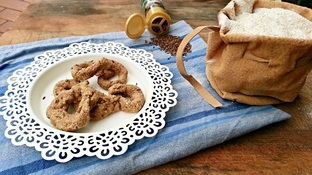 version:
version:
Ingredients:
1 cup millet flour (millet flour makes “Taralli” crispy)
1/2 cup pulp sesame
½ cup soaked buckwheat
1 cup of green olives
½ cup water or less
salt is not needed because of the salty olives
Put all the ingredients in a food processor until the dough forms into a rough mass. Pinch walnut-sized pieces of dough, roll first between your hands, and then against the wooden cutting board, so that the dough forms a thin rope, about ½ inch (1 cm) in diameter and 4” long (10 cm). Shape each rope into a ring, and seal the edges together by pressing lightly, then set aside the Taralli rings on a teflex sheets. Season with cumin and put in a dehydrator at 42 degrees for 12 hours or until perfectly crispy.
Enjoy the flavors of Italy!
Neli Todorov writes an active blog http://nelisraw.blogspot.it/ and shares news of workshops and events on her facebook page
I wasn’t sure about writing a detox blog this year because it seemed predictable, but something clicked inside of me and I wanted to write about how we can learn to listen more about our body and know when it is time to reboot or reset the button.
There are many reasons why people have the need to clean out the cobwebs. Here the main reasons:
overindulgence
chronic-stress
 fatigue
fatigue
sluggishness
digestive problems (bloating,skin problems)
Results:
Gain more energy
increase vitality
refined senses
clear mind and focus
positivity
inspired and motivate
Realigning with our internal guidance system is the reason why I detox. I love the way my food-mind -body comes into balance. We need to learn how to listen to our body’s and know when it is time.
Here is a really simple plan.
1 big glass of warm water with Lemon or Apple cider vinegar upon rising.
1/2 an hour later 1 smoothie
Ginger/Mint/Mango Smoothie
2 cups firmly packed Greens: spinach, kale, collard, purslane,
1/2 cup mint
1/2 lemon with rind for bioflavanoids
1/2 avocado
1 mango fresh or frozen
2 cups water
1 Tbs. spirulina, hemp powder, maca, optional
Blend in a high speed blender until smooth
Drink lots of water during the day
Coriander, Spinach Sweet Potato Soup
2 cups Spinach or Kale
1/2 cup coriander
1/2 avocado
1-2 Tbs. Coconut oil
1/2 sweet potato cubed
1 small nob tumeric fresh
2 cups water
Blend in a high speed blender and consume around 4 pm
Daily skin brushing – The skin is our biggest organ, by invigorating the whole body we allow the toxins to come out. It’s a really simple process to get the skin smooth and glowing, and also great for those stubborn cellulite areas too!
Sauna – infra-red saunas are the best, but any sauna will steam-clean you from the inside out. Make this a weekly habit for a month and just feel the difference.
Exercise – this means walking, yoga, swimming – get out and about as much as you can.
Meditation – Find a nice tranquil place and make this your special meditation spot. Just 15 minutes a day with the intention of being still and quiet will do wonders for you.
By making small changes to your routine you can experience great benefits. It doesn’t mean you have to go-hard or go-home, it doesn’t mean you need to restrict yourself and push yourself to the edge every time. Just a few simple additions to your daily life will bring a spring back to your step, and you never know perhaps they will become a regular part of your life.
Be happy, love life and shine!
The bare naked sky above you is good for you. That ceiling and those walls just contain you.
The breeze on your face is good for you. That air conditioning (or heating) just dries you out.
The ground beneath your feet–be it grass or dirt or sand is good for you. Wooden floors are nice, don’t get me wrong, but they are inside!!
When you practice outside beneath an open blue sky you look up and feel almost as though you are a part of it. It’s breath-taking.

When you open your eyes from savasana to behold a starry night you can’t help but feel at peace.
It’s awe inspiring.
When you start your pre-dawn practice and watch the sun rise, you feel the sun’s rays shimmering on your skin.
It’s radiant.
When you practice in nature you are continually amazed by the beauty of the world around you.
No matter what wallpaper is pasted, what music is played, or what statues are placed, I will never find a better place to practice than the great outdoors.
On days when I feel exhausted, I always feel better if I just open a window or door.
On days when I think I can’t practice, I simply step outside and find myself drawn to move or sit quietly and meditate.
It might be freezing, it might be boiling. It might be windy, it might be raining.
I simply pop my head outside and figure out what I need to wear and where I can be as sheltered as necessary without ‘succumbing’ to the elements.
It can be hard. Sometimes you need to be creative. But it is always worth it.
One of the main elements on our retreats is to get connected to mother nature. To be inspired and supported by the simple things in life.
Why don’t you try for yourself? Expose yourself to the outdoors and feel yourself embraced by nature.
www.yogacafecanberra.blogpost.com
www.artofliferetreats.com
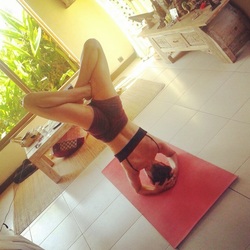 In most Asian countries people sit on the floor for most of their daily tasks. All their meals and socialising as well as their general work is still done mainly on the ground. This means that their hips are open and their spines are able to move independently from their hips, this also requires having great strength in the legs and core to be able to get up and down from such high distances with ease, hence Padmasana is a basic pose for many Asian people.
In most Asian countries people sit on the floor for most of their daily tasks. All their meals and socialising as well as their general work is still done mainly on the ground. This means that their hips are open and their spines are able to move independently from their hips, this also requires having great strength in the legs and core to be able to get up and down from such high distances with ease, hence Padmasana is a basic pose for many Asian people.
All these elements are really important to able to get into a seated lotus position. In the West our chair-culture has prevented us from developing these movements and openings. So when we start to practice yoga, just sitting on the floor is our biggest practice.
Moving the spine in different leg positions allows the softening to happen. The ideal way to get into any pose is to move into it without any assistance. By focusing on active movements we develop the muscle intelligence without having to force any joint into a position that might not be ready. In Padmasana so much care needs to be taken around the knee area, but both the hip and ankle joints can also be compromised if these areas are also too stiff.
Just like we cross our arms easily, our legs should be able to move just as gracefully. One of the easier ways to practice lotus is in a headstand where gravity works in our favour. But to do this, first our headstand needs to be proficient so do take care.
So in your normal practice focus on active movements with the usual standing hip opening poses (forward bends, lunges, trikonasana variations, warrior variations, gadjastan variations) as well as moving actively (no hands) into sitting poses.
Make sure to actively externally rotate the hip that should be externally rotated in those postures. Also make sure to remain active in the pose so as not to not sink into hips. Use principles of activating muscles while in lengthened positions.
We can see how a more natural bodied person, Ramali can come into a pose like Padmasana (lotus) with ease and without hands.
Ramali takes her legs into position in two very smooth movements. This is what we are looking for in our practice.While Sonja can do this first thing in the morning, with no preceding warm ups or movements, as we can see in the video she still has a slight ‘sawing’ action to get there. It’s all a practice.
This article was not written to dishearten. But for us to think about the truth and reality of what our body is able to do of its own accord.
Based on ideas of active movements and trying not to force your body into position we encourage students to try to move their legs into postures using just their legs. This brings much more body awareness ~ play around with it when you are next on the mat!
Happy and safe practicing.
Oksana
Join us on our upcoming retreat
www.yogacafecanberra.blogspot.com
“Take all you can eat but eat all you take.”
At first glance, this might seem like a sure-fire way to obesity. The sort of instruction that tells you to eat everything on your plate and don’t even think about leaving the dinner table until you have!
However, it was not.
Dad was very mindful of waste. He grew up in a time where you were lucky to have a pair of shoes to walk to school in and, despite limited travel opportunities, knew enough about the world to understand there were plenty of people who were lucky to get one meal a day, let alone three.
So Dad’s advice was about being mindful and appreciative of what you had. He would always tell us we could go back for more if we were really hungry but perhaps put only the amount of food on your plate that you are sure you can eat. At the same time he would remind us that sometimes your eyes can be bigger than your stomach so perhaps take a little and then wait and see if you need more.
Having lived in countries like Bangladesh, India, and Sri Lanka I have seen for myself how some families throw out more food after one meal than other families get to eat in a day and I always think of my Dad’s advice when I see food bins overflowing with ‘scraps’.
This piece of Dad advice is very much in line with common sense ideas about listening to what your body really needs, which many of us who have always enjoyed plenty, can easily forget.
Number 2 Way To Beat Overindulgence: Or When it is Ok to have Mars Bars for Breakfast Dad also gave us Mars Bars for breakfast on weekends before our athletics meets. To this I think most kids would go hooray and most parents would probably raise their eyebrows. But Dad was always about activity. His approach to eating was very much about balancing input with output. He knew that after eating that Mars Bar we would spend 3 hours out in the sun running around competing in 1500m runs, sprints, long jumps, shot puts, and all of the handstand competitions that went on in between events.
You might think Dad was all about junk but that is not true. He was thinking about nutrients based on the information he had at the time, combined with how much energy we would need and giving us something to eat that would not make us feel full and sluggish.
Dad was not just handing us rubbish. You see, Dad also made our sandwiches with multi-grain and wholemeal bread back before they were popularised telling us that eating white bread was like eating fresh air (i.e., basically nutrient poor). Anyway, his approach to food was that you needed to balance intake with output, consider whether what you ate would give you the energy you needed to do what you wanted.
On days where we weren’t doing much you can bet we were not being offered chocolates, although this was a rare day indeed as Dad would always have us engaged in something fun and active.
Actually, Dad was unknowingly following the only diet ever known to actually work in the long-term, which is to balance what you eat with what you do.
So, this piece of Dad advice is extremely important: “Eat to live don’t live to eat.”
While those are not Dad’s words, they are what he modeled and still models to this day. If you don’t do very much, then don’t eat very much. If you are doing a lot, then eat so you can do the things you need to do. In this regard, our Christmas Day with Dad always started with a family bike ride so that we might feel hungry enough for Christmas lunch rather than eat the food because it was there.
Number 3 Way To Beat Overindulgence: Don’t Pop Your Buckle This last piece of advice is actually what Dad’s Dad used to say. Or, at least Dad always quotes Grandfather when he says it.
“Always leave the dinner table feeling that you could eat a little more.”
This is excellent advice and stops you feeling like a python when you get up from the Christmas dinner table.
This is related to both the first and second pieces of advice. It is about eating what you need, and about ensuring whatever you eat does not prevent you from doing the things you want to or need to do.
The idea of eating so much that you could not go out and play with the kids or fix the car or tinker around in the shed was/is abhorrent to Dad who, to this day, will make sure he gets up to ‘unblob’ himself (as he puts it) if he has had a big lunch that is putting him to sleep.
In Sum Dad’s advice comes from a person who was physically active, and who appreciated that your body needs to work and move well so you can participate in a variety of daily activities. Dad was a runner and did not practice physical yoga. He does not have much idea of yoga beyond the knowledge that it is something I go and teach and do and which seems to be associated with me spontaneously doing handstands in the driveway or hanging from the beams of his verandah. However, to me his advice is very much in tune with ideas about respecting the interrelationship between body and mind and community that I have read in yogic texts and have learned from my teachers. Thanks Dad!
Merry Christmas to all. Happy and safe practicing.

